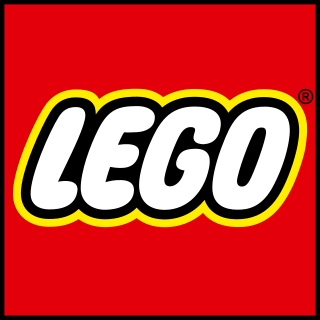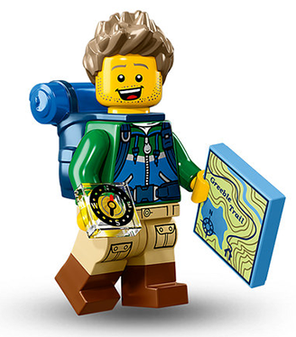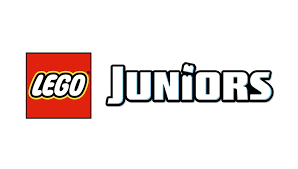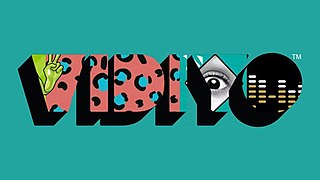
This article lists notable events and releases in the history of the Lego Group.
The history of Lego began in 1932, when Ole Kirk Christiansen who owned a Danish carpentry workshop that at first only produced furniture started making wooden toys and later named the new toy company Lego in 1934. Later when injection molding was introduced to Denmark after World War II Ole Kirk bought an injection molding machine for the company to make toys in 1947. That same year Kirk and his son obtained samples of plastic, interlocking bricks which inspired the later lego bricks created in 1949. The brick and lego system continued to be modified with new molds and colors being added and removed over the decades. Lego still continues into the 21st century as a popular and very profitable line of construction kits and related products and services, with a significant impact on various areas in popular culture. Despite its expansion, the company remains privately held.

A Lego minifigure, often simply referred to as a Lego figure or a minifig, is a small plastic articulated figurine made of special Lego bricks produced by Danish building toy manufacturer The Lego Group. They were first produced in 1978 and have been a success, with over 4 billion produced worldwide as of 2020. Minifigures are usually found within Lego sets, although they are also sold separately as collectables in blind bags, or can be custom-built in Lego stores and on lego.com. While some are named as specific characters, either licensed from already existing franchises or of Lego's own creation, many are unnamed and are designed simply to fit within a certain theme. They are highly customizable, and parts from different figures can be mixed and matched, resulting in many combinations.
Lego Creator is a Lego theme for generic models. Creator sets have few specialized bricks to create buildings, creatures, vehicles, and robots. Some sets featured instructions for three different possible builds from the bricks included and most sets in recent years have used the 3-in-1 label. Creator is also a parent theme to Lego Icons, a Lego subtheme for adolescents and adults featuring advanced building techniques and large piece counts, mostly known for Modular Buildings and detailed vehicles. Creator also has had several other subthemes such as X-Pods and mosaics.

Lego Digital Designer was a CAD software made by Lego which allowed people to design a virtual model using a selection of virtual Lego bricks. These models could be saved locally, as well as uploaded to the Lego website for sharing and ordering as a physical product. It is available for macOS and Windows, but only as a 32-bit application, which means that it no longer runs on current versions of macOS. The program allows users to build models using virtual Lego bricks, in a computer-aided design like manner. Until January 16, 2012, these could be uploaded, along with instructions and a box design, to the Lego Design byME website, from where the models could be ordered for delivery as a real, packaged set. Users can also take screenshots of their models and store the models on their computer in an .LXF file. On November 9, 2011, Lego declared that the Design byME service was going to end on January 16, 2012, due to its failure to meet quality expectations and for being too complex. In its absence, custom brick orders have had to be made via the Pick a Brick service. The closing of Design byME has not affected the ability of users to print custom instructions for their models.

Lego Belville was a Lego theme designed to appeal primarily to girls. First introduced in 1994, the theme included multi-jointed doll-like characters that were larger in scale than the traditional Lego minifigure. The toy sets were produced from standard Lego bricks and larger pieces, often in a pink and purple colour scheme, and depicted scenes from fairy tales and fantasy as well as everyday life. The product line was discontinued in 2009. Belville's direct successor is Lego Friends, which was introduced in 2012. Other Lego product ranges that have been designed for girls include Homemaker (1971-1982), Paradisa (1991–1997) and Scala (1997–2001).

Lego Modular Buildings is a series of Lego building toy sets introduced in 2007, with new sets usually being released annually. Created in response to feedback and suggestions from the Adult Fans of Lego bricks (AFOL) and Teen Fans of Lego (TFOL) communities, the sets in this series are generally intended for more advanced builders. Most sets contain more than 2,000 total pieces and make use of unorthodox building techniques not usually used in previous official Lego sets. In contrast to most Lego sets aimed at children and adolescents, the suggested age of most sets in the Lego Modular Buildings series is 16 years or older. The Lego Modular Buildings sets have been received with positive reviews and are considered by Lego designers and fans as "toys for adults".

Lego Toy Story is a Lego theme based on the Disney·Pixar's Toy Story film franchise. The first four sets were released on December 30, 2009, with an additional two sets being released on January 4, 2010. In May, five Lego and four Duplo sets were released under the Toy Story 3 sub-theme. For the release of Toy Story 4 there was one Duplo set based on the third film and 6 Lego sets based on the fourth film. These sets were released in March and in April 2019 this time under the Juniors line. The minifigures in the sets were also now redesigned.

Lego Prince of Persia was a Lego theme based on the 2010 film Prince of Persia: The Sands of Time. It was licensed from Walt Disney Pictures and Jerry Bruckheimer Films. The theme was introduced in 2010 and was discontinued by the end of 2011.
Lego Ninjago is a Lego theme that was created in 2011 and a flagship brand of The Lego Group. It is the first theme to be based on ninja since the discontinuation of the Lego Ninja theme in 2000. It was produced to coincide with the computer-animated television series Ninjago, which was superseded in 2023 by a new series titled Ninjago: Dragons Rising.
Lego Speed Champions is an auto racing-inspired theme of Lego building sets first released in 2015. It features classic and modern styles from well-known car brands.

Lego Juniors was a product range of the construction toy Lego, designed for children aged 4 to 7 years old. It acted as a transition from the Duplo to the regular Lego System. Lego Juniors initial release was on February 14, 2014, with the tagline Easy to build. It was the successor to the Bricks & More line released in 2009. Unlike its predecessor, Lego Juniors offered specialized bricks to make builds look more realistic while using fewer pieces for an easier build. The product line was discontinued by the end of 2018 and rebranded as "4+".
Lego Icons is a series of Lego construction toys aimed at a demographic of adolescents and adults. Beginning in 2000 without an established logo or icon, Icons features models such as aircraft, sculptures, and world buildings, selling as exclusives with numerous specialized elements and complex building techniques. Icons is considered a challenge to both the target audience and Lego designers. All Icons sets are classified into specified sub-themes; however, the entirety of Icons is classified as a sub-theme of Lego Creator.
The Lego Ninjago Movie was a product line based on The Lego Ninjago Movie, the third film of The Lego Movie franchise. It was licensed from The Lego Group and Warner Bros. Animation. The theme was introduced in 2017 as part of a licensing and merchandising programme associated with the film. Alongside the release of the Lego sets, the programme included the release of several promotional short films and The Lego Ninjago Movie Video Game. The product line was discontinued by the end of 2019.
Lego Overwatch is a Lego theme based on the video game of the same name. It is licensed from Blizzard Entertainment. The theme was first introduced in October 2018. A set based on the upcoming Overwatch 2 was scheduled to be released in February 2022, but has been delayed indefinitely, leaving theme's return uncertain.

Lego Legacy: Heroes Unboxed is a Lego-themed turn-based strategy game developed and published by Gameloft. It was released on Apple's App Store and Google Play as a free downloadable game. The game centres on a fictional location named Piptown, which serves as the central game hub for accessing the challenges, campaigns, events, shop, guilds, and arena.

Lego Vidiyo was a Lego theme that allows children to create their own music videos and dance clips using a range of Lego toy sets and an associated app. It is licensed from Universal Music Group. The theme was first introduced in March 2021, before being discontinued by the end of January 2022 after being deemed a commercial disaster.
Lego Minions: The Rise of Gru was a Lego theme based on the film of the same name. It is licensed from Universal Pictures and Illumination. The theme was first introduced in March 2020. It was eventually discontinued by the end of December 2022.
Lego Fusion was a Lego theme that combined standard Lego bricks with a mobile app that was designed to interact and communicate with the build models according to the principle of augmented reality. The theme was first introduced on 1 August 2014 and exclusively in North America only. It was eventually discontinued by the end of July 2015.
Lego Stranger Things was a Lego theme based on the 2016 Netflix sci-fi horror series of the same name created by the Duffer Brothers. It was licensed from Netflix. The theme was first introduced in May 2019 and was discontinued in December 2022.












